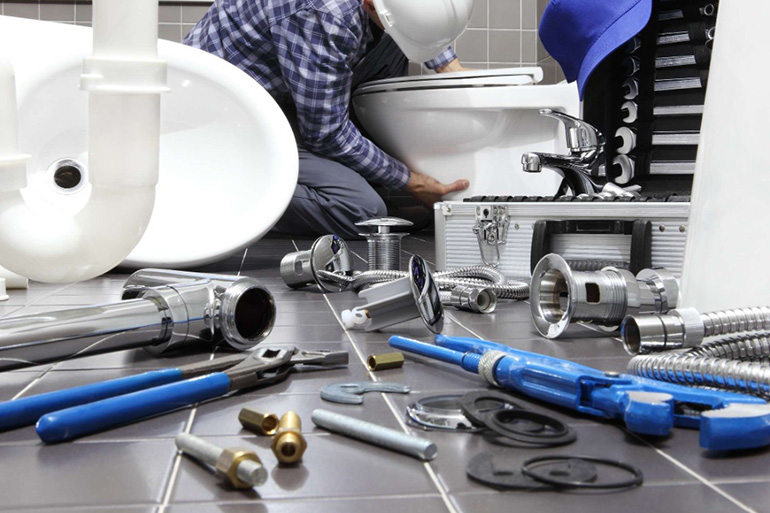
Plumbing & sanitary Installation
Plumbing and sanitary installation involves the system of pipes, drains, fittings, valves, and fixtures used for the distribution of water supply and the removal of waste in buildings. Here are some key aspects typically involved in plumbing and sanitary installations:
Water Supply System:
Pipes: These can be made from various materials such as copper, PVC (polyvinyl chloride), PEX (cross-linked polyethylene), or galvanized iron. Pipes carry cold and hot water to various fixtures in the building.
Fittings and Valves: These include couplings, elbows, tees, and valves (like ball valves or gate valves) that control water flow and direction.
Drainage System
Pipes: Usually made of PVC or cast iron, these pipes carry wastewater and sewage away from the building to the sewer system or septic tank.
Traps: These are U-shaped sections of pipe that retain a small amount of water to prevent sewer gases from entering the building.
Fixtures
Sinks, Toilets, Bathtubs, Showers: These are connected to both the water supply and drainage systems. They include faucets, showerheads, and other accessories.
Sanitary Ware:
Sanitary Fixtures: These are items like toilets, bidets, urinals, and sinks used for personal hygiene.
Installation Process
Design: Planning the layout and sizing of pipes and fixtures based on building codes and user requirements.
Installation: Physically installing pipes, fittings, fixtures, and other components according to the design.
Testing: Pressure testing and leak testing to ensure the system is installed correctly and doesn’t leak.
Maintenance: Periodic checks and repairs to ensure the system continues to function properly.
Regulations and Codes:
Plumbing installations must comply with local building codes and regulations to ensure safety, efficiency, and proper sanitation.
Specialized Systems
Some buildings require specialized systems such as fire sprinklers, gas supply lines, or water treatment systems, which may also fall under plumbing installation.
Overall, plumbing and sanitary installation is critical for ensuring the safe and efficient distribution of water and removal of waste in residential, commercial, and industrial buildings. It requires careful planning, skilled labor, and adherence to regulations to maintain functionality and safety.
